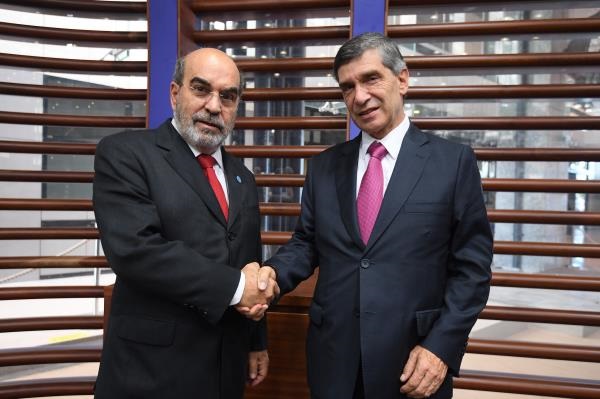
05 July 2017, Rome – Colombia’s progress in using rural development as a tool to clinch peace after more than half a century of civil war can “fill the entire world with hope and knowledge,” FAO Director-General José Graziano da Silva said today.
“The only road to peace is the path of dialogue, negotiation, cooperation, inclusion and equity, which is also the road to sustainable development where nobody is left behind,” Graziano da Silva said. “Everybody hopes that what is happening in Colombia can be a model elsewhere.”
FAO is working with government and civil society organizations and providing policy advice on three important new institutions: national land registry, a rural development agency and a territorial renovation agency.
53 years of armed conflict ended earlier this month when members of the FARC rebel group handed over their weapons in line with a peace deal brokered over years and formalized in 2016. Land control, agricultural practices and livelihoods remain strongly affected a conflict that extended across much of the country.
The government is rolling out more than 80 special laws and 1,000 programmes to implement the terms of the peace deal, ranging from rural electrification projects, job retraining and income support schemes for former militia members, and tax incentives for companies that build public infrastructure. Colombia is also giving former FARC members key roles in its vast campaign to remove land mines, of which there are more than in any other country except Afghanistan.
The government’s comprehensive reform plan ultimately covers 14,000 small rural households and requires dialogue with local grassroots groups to cobble together district-level development plans.
“The conflict mostly took place in rural areas and as a result the opportunities of Colombians who live there are greatly inferior to those who live in cities," Rafael Pardo, Colombia’s Minister of Post-Conflict, Human Rights and Security and a key player in his country’s peace process, said at FAO today.
FAO’s “very broad experience and presence in the country” makes it a “fundamental companion for all the rural development activities over the 15 years during which the peace agreement will be implemented,” he added.
The central role of land reform and tenure
Pardo noted the creation with FAO’s help of a multi-purpose land registry. Tenure issues are central to rebooting huge agricultural potential in a country where conflict uprooted households, where some people live in national parks, where illegal coca cultivation is rife and where only one-fourth of all arable land is being cultivated.
“Land was the origin of the armed conflict and land will provide most of the solutions,” said Rafael Zavala, FAO’s Representative in Colombia.
Pardo also outlined new plans and incentives to shift farmers out of cultivating coca leaves to alternative crops, saying he hoped to have more than 50,000 households signed up by the end of the year.
Colombia as an example for other countries suffering conflict
“Every country has its own processes and dynamics, but fundamentally it is dialogue that allows for solutions to problems,” Pardo said.
“The most important lesson of the Colombian peace agreement is that it goes far beyond the traditional themes of peace deals, such as demobilization, disarmament and reintegration. It’s a comprehensive agreement that aims to transform and improve rural life and livelihoods.”
He added: “A population where food security is not assured has no possibilities for peace."